Equipment
The Sony FE Lenses MTF and Variance Summary

We’ve put all of this information out in other articles, but it was as we finished each one so it’s become scattered about. I wanted to simply put up all of our MTF and variance curves for Sony FE lenses in one place so you wouldn’t have to hunt and search for different articles to get the information you wanted. So there’s nothing new here, and very little commentary, just a single place where you can go to compare FE lenses.
Remember that each lens was tested at it’s widest aperture. The Sony FE 35mm f/1.4 has lower MTF than the Sony FE 35mm f/2.8, for example, because they were tested at different apertures, not because the f/2.8 is a sharper lens.
I also want to point out that the new variation curves we’re using now tend to minimize the difference between lenses a bit compared to the old ones. We think that’s appropriate since people were really splitting hairs with them before. But with these, when you notice a difference, it’s a pretty real difference.
FE Prime Lenses

OlafOpticalTesting, 2016

OlafOpticalTesting, 2016

OlafOpticalTesting, 2016
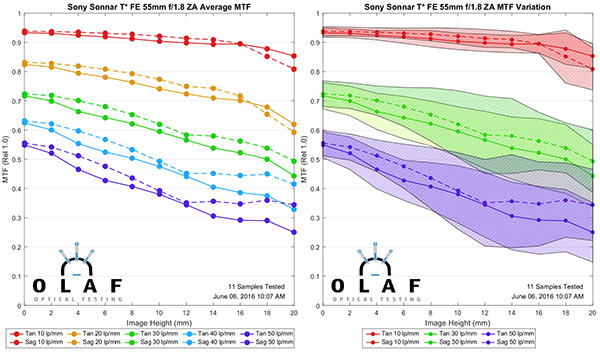
OlafOpticalTesting, 2016

OlafOpticalTesting, 2016

OlafOpticalTesting, 2016
Zoom Lenses
For each zoom, we’ll show that results at 3 focal lengths: wide, center, and long end.
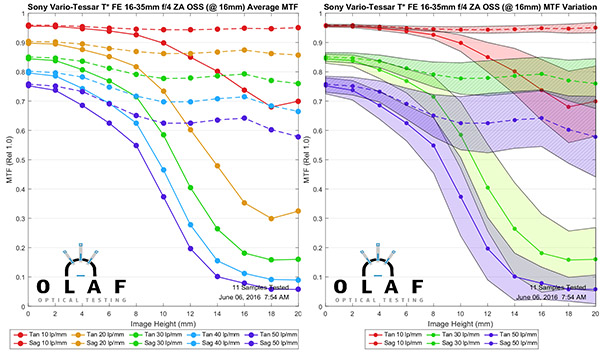
OlafOpticalTesting, 2016

OlafOpticalTesting, 2016

OlafOpticalTesting, 2016

OlafOpticalTesting, 2016
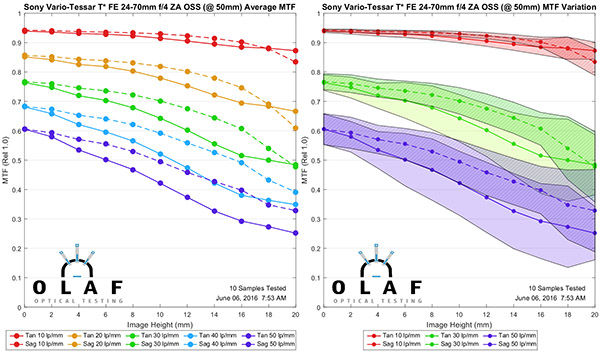
OlafOpticalTesting, 2016

OlafOpticalTesting, 2016
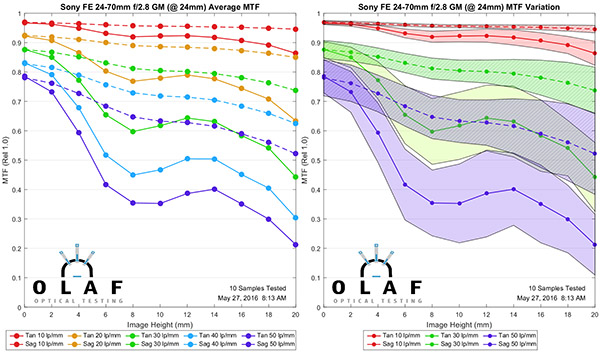
OlafOpticalTesting, 2016

OlafOpticalTesting, 2016
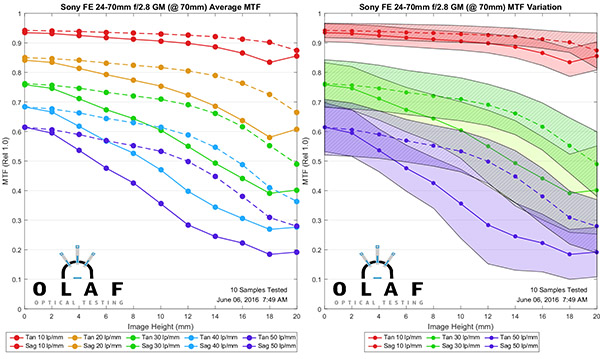
OlafOpticalTesting, 2016

OlafOpticalTesting, 2016

OlafOpticalTesting, 2016

OlafOpticalTesting, 2016
I’m not going to make any comments here, we’ve made them in previous articles. We just wanted to get all of the MTF curves in one place where you could find them easily.
Roger Cicala, Aaron Closz, Brandon Dube, and Diego Martinez
Lensrentals.com
June, 2016
Author: Roger Cicala
I’m Roger and I am the founder of Lensrentals.com. Hailed as one of the optic nerds here, I enjoy shooting collimated light through 30X microscope objectives in my spare time. When I do take real pictures I like using something different: a Medium format, or Pentax K1, or a Sony RX1R.
